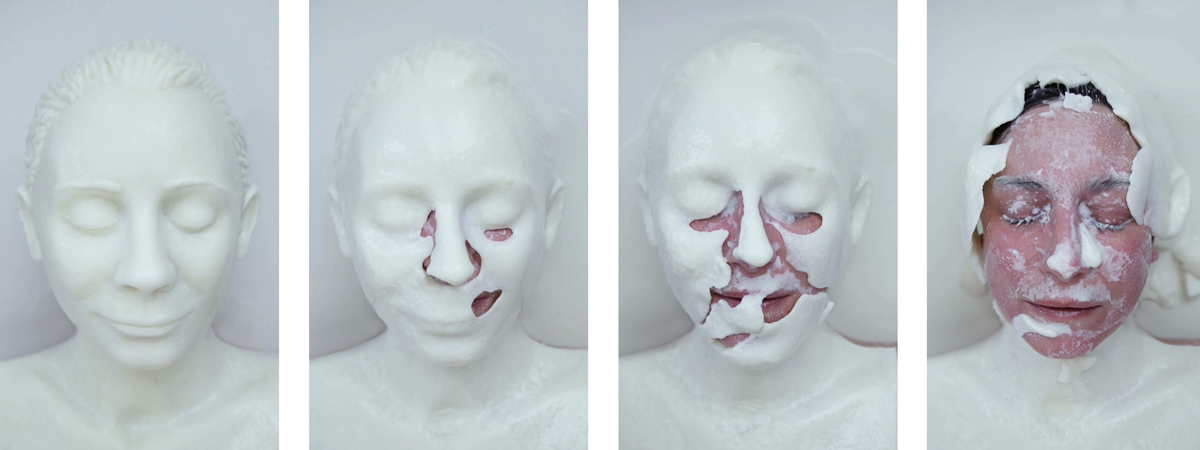tool#38
2014 / video / 6:16 min loop / videostills / 4 x 48 cm x 30 cm
Note: Let a cast of my own face made from frozen milk melt on me
Exhibition text by Dr. Uta Kornmeier on the exhibition «Kopfarbeit – Video Performances by Eva Wandeler» in the Berlin Medical History Museum of the Charité
Kindness or meanness, intelligence or stupidity, feeling and character – all these are qualities we believe we can see in the faces and skulls of others. But what we actually see are forms and proportions, and we “read” qualities into them on the basis of our cultural experiences. Masks, make-up or operations change the appearance of the head. So how can we believe that we can infer from the outside to the inside? The relationships between inside and outside, between form and loss of form, between identity and monstrosity are the themes of Eva Wandeler’s video performances. These have been developed in the examination of facial and cranial forms and the practices of plastic surgery. Using make-up and masks, the Swiss artist performs aesthetic operations on the head here, which raise the question of how we relate form and character to one another. She explores her own body in order to achieve profound changes, both in its effect and in its expression, with such simple and effective means. Wandeler calls these means tools. In a first series, her tools are masks made of ice cream, chocolate, milk and gelatine, which the artist puts on her face. She films what happens when the masks melt or tear. Although the material only follows its physical properties in the process of disintegration, sometimes disturbing, sometimes ridiculous grimaces are created. We cannot help but read human emotions and characters into these random changes of form. Only after the mask has completely dissolved does the intact surface of the face reappear. In a second series Eva Wandeler uses theatre make-up as a tool. She paints her face and in this way makes it appear or disappear. During this process, the invisibility of parts of the face acts like a physical injury. So how much paint must be applied so that the form is perceived as intact; how much of the contour can be removed before the head appears deformed? In her video works Wandeler tries to find artistic answers to questions that medicine and the history of medicine are dedicated to with regard to illness and healing.
Artist in Residence at the Leibniz-Zentrum für Literatur- und Kulturforschung ZfL in collaboration with the project SchädelBasisWissen
Thanks to Frederic Moriette for helping with the filming and all the inspiring discussions
